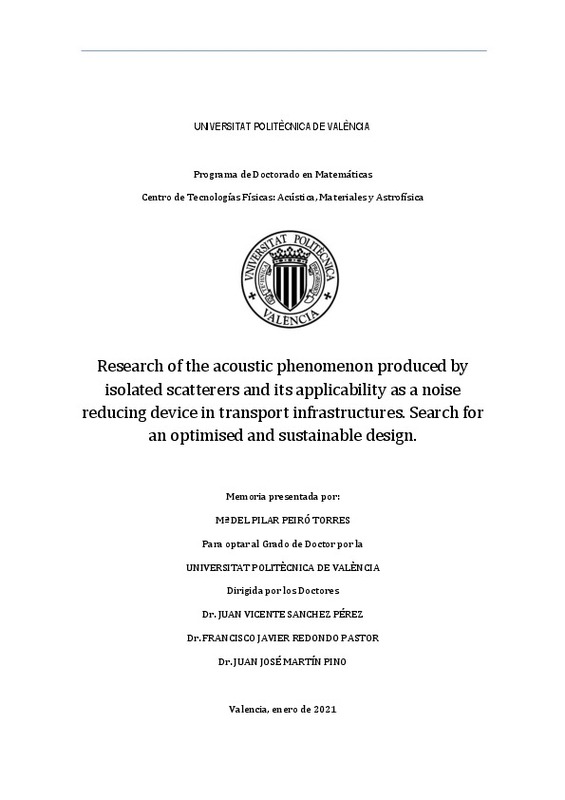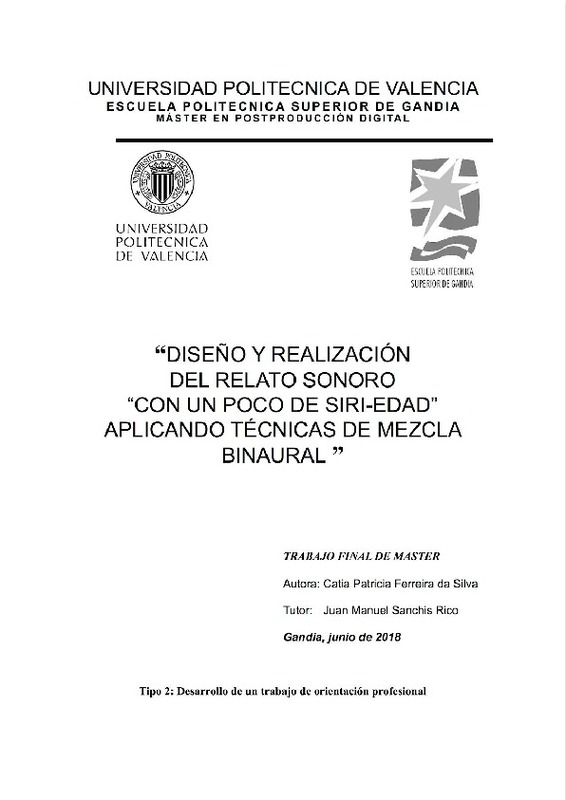JavaScript is disabled for your browser. Some features of this site may not work without it.
Buscar en RiuNet
Listar
Mi cuenta
Estadísticas
Ayuda RiuNet
Admin. UPV
Material sound source localization through headphones
Mostrar el registro sencillo del ítem
Ficheros en el ítem
| dc.contributor.author | Dunai, Larisa
|
es_ES |
| dc.contributor.author | Peris Fajarnes, Guillermo
|
es_ES |
| dc.contributor.author | Lengua, Ismael
|
es_ES |
| dc.contributor.author | Tortajada Montañana, Ignacio
|
es_ES |
| dc.date.accessioned | 2018-11-01T05:34:49Z | |
| dc.date.available | 2018-11-01T05:34:49Z | |
| dc.date.issued | 2012 | es_ES |
| dc.identifier.issn | 1063-7710 | es_ES |
| dc.identifier.uri | http://hdl.handle.net/10251/111691 | |
| dc.description.abstract | [EN] In the present paper a study of sound localization is carried out, considering two different sounds emitted from different hit materials (wood and bongo) as well as a Delta sound. The motivation of this research is to study how humans localize sounds coming from different materials, with the purpose of a future implementation of the acoustic sounds with better localization features in navigation aid systems or training audio-games suited for blind people. Wood and bongo sounds are recorded after hitting two objects made of these materials. Afterwards, they are analysed and processed. On the other hand, the Delta sound (click) is generated by using the Adobe Audition software, considering a frequency of 44.1 kHz. All sounds are analysed and convolved with previously measured non-individual Head-Related Transfer Functions both for an anechoic environment and for an environment with reverberation. The First Choice method is used in this experiment. Subjects are asked to localize the source position of the sound listened through the headphones, by using a graphic user interface. The analyses of the recorded data reveal that no significant differences are obtained either when considering the nature of the sounds (wood, bongo, Delta) or their environmental context (with or without reverberation). The localization accuracies for the anechoic sounds are: wood 90.19%, bongo 92.96% and Delta sound 89.59%, whereas for the sounds with reverberation the results are: wood 90.59%, bongo 92.63% and Delta sound 90.91%. According to these data, we can conclude that even when considering the reverberation effect, the localization accuracy does not sig- nificantly increase. © Pleiades Publishing, Ltd., 2012. | es_ES |
| dc.description.sponsorship | This research was supported by Research Center in Graphic Technology from the Universidad Politecnica de Valencia. | en_EN |
| dc.language | Inglés | es_ES |
| dc.publisher | MAIK NAUKA/INTERPERIODICA/SPRINGER | es_ES |
| dc.relation.ispartof | Acoustical Physics | es_ES |
| dc.rights | Reserva de todos los derechos | es_ES |
| dc.subject | Delta sound | es_ES |
| dc.subject | Material sounds | es_ES |
| dc.subject | Sound localization | es_ES |
| dc.subject | Acoustic sound | es_ES |
| dc.subject | Blind people | es_ES |
| dc.subject | Environmental contexts | es_ES |
| dc.subject | Graphic user interface | es_ES |
| dc.subject | Head related transfer function | es_ES |
| dc.subject | Localization accuracy | es_ES |
| dc.subject | Navigation aids | es_ES |
| dc.subject | Reverberation effects | es_ES |
| dc.subject | Sound source localization | es_ES |
| dc.subject | Source position | es_ES |
| dc.subject | Audio systems | es_ES |
| dc.subject | Handicapped persons | es_ES |
| dc.subject | Headphones | es_ES |
| dc.subject | Loudspeakers | es_ES |
| dc.subject | Reverberation | es_ES |
| dc.subject | Sound reproduction | es_ES |
| dc.subject | Wood | es_ES |
| dc.subject | Audio acoustics | es_ES |
| dc.subject | Acoustics | es_ES |
| dc.subject | Noise | es_ES |
| dc.subject | Reproduction | es_ES |
| dc.subject.classification | EXPRESION GRAFICA EN LA INGENIERIA | es_ES |
| dc.title | Material sound source localization through headphones | es_ES |
| dc.type | Artículo | es_ES |
| dc.identifier.doi | 10.1134/S1063771012050077 | es_ES |
| dc.rights.accessRights | Cerrado | es_ES |
| dc.contributor.affiliation | Universitat Politècnica de València. Departamento de Ingeniería Gráfica - Departament d'Enginyeria Gràfica | es_ES |
| dc.contributor.affiliation | Universitat Politècnica de València. Centro de Investigación en Tecnologías Gráficas - Centre d'Investigació en Tecnologies Gràfiques | es_ES |
| dc.description.bibliographicCitation | Dunai, L.; Peris Fajarnes, G.; Lengua, I.; Tortajada Montañana, I. (2012). Material sound source localization through headphones. Acoustical Physics. 58(5):610-617. doi:10.1134/S1063771012050077 | es_ES |
| dc.description.accrualMethod | S | es_ES |
| dc.relation.publisherversion | https://doi.org/10.1134/S1063771012050077 | es_ES |
| dc.description.upvformatpinicio | 610 | es_ES |
| dc.description.upvformatpfin | 617 | es_ES |
| dc.type.version | info:eu-repo/semantics/publishedVersion | es_ES |
| dc.description.volume | 58 | es_ES |
| dc.description.issue | 5 | es_ES |
| dc.relation.pasarela | S\230415 | es_ES |
| dc.contributor.funder | Universitat Politècnica de València | |
| dc.description.references | D. S. Brungart and W. M. Rabinowitz, J. Acoust. Soc. Am. 106, 1465 (1999). | es_ES |
| dc.description.references | D. S. Brungart, I. Nathaniel, and W. R. Rabinowitz, J. Acoust. Soc. Am. 106, 1956 (1999). | es_ES |
| dc.description.references | H. Bruce and D. Hirsh, J. Acoust. Soc. Am. 31, 486 (1959). | es_ES |
| dc.description.references | D. I. Shore, S. E. Hall, and R. M. Klein, J. Acoust. Soc. Am. 103, 3730 (1998). | es_ES |
| dc.description.references | J. C. Kidd and J. H. Hogloben, J. Acoust. Soc. Am., 116, 1116 (2004). | es_ES |
| dc.description.references | L. Dunai, G. P. Fajarnes, B. D. Garcia, N. O. Araque, and F. B. Simon, Acoust. Phys. 55, 448 (2009). | es_ES |
| dc.description.references | L. Dunai, G. P. Fajarnes, B. D. Garcia, and V. S. Praderas, Acoust. Phys. 56, 348 (2010). | es_ES |
| dc.description.references | M. Gröhn, Proc. Int. Conf. on Auditory Display, Kyoto, 2002. | es_ES |
| dc.description.references | E. S. Malinina and I. G. Andreeva, Acoust. Phys. 56, 576 (2010). | es_ES |
| dc.description.references | E. D. Shabalina, N. V. Shirgina, and A. V. Shanin, Acoust. Phys. 56, 525 (2010). | es_ES |
| dc.description.references | A. Pompey, M. A. Sumbatyan, and N. F. Todorov, Acoust. Phys. 55, 760 (2009). | es_ES |
| dc.description.references | R. L. Klatzky, D. K. Pai, and E. P. Krotkov, Presence: Teleoperators and Virtual Environments 9, 399 (2000). | es_ES |
| dc.description.references | M. Aramaki, M. Besson, R. Kronland-Martinet, and S. Ystad, Proc. 5th Int. Symp. on Comp. Music Model. Retriev. (CMMR 2008), Copenhagen, 2008, pp. 1–8. | es_ES |
| dc.description.references | W. Gaver, PhD Dissertation, Univ. California, San Diego, 1988. | es_ES |
| dc.description.references | N. I. Durlach, A. Rigapolus, X. D. Pang, W. S. Woods, A. Kulkarni, H. S. Colburn, and E. M. Wenzel, Presence: Teleoperators and Virtual Environments 1, 251 (1992). | es_ES |
| dc.description.references | S. A. Gelfand, Essentials of Audiology, 3rd ed. (Thieme Medical Publishers, New York, 2009). | es_ES |
| dc.description.references | J. Jerger, ASHA 4, 139 (1962). | es_ES |
| dc.description.references | H. Mershon, W. L. Ballenger, A. D. Little, P. L. McMurtry, and J. L. Buchanan, Perception 18, 403 (1989). | es_ES |
| dc.description.references | D. O. Kim, A. Moiseff, T. J. Bradley, and J. Gull, Acta Otolaryngologica 128, 328 (2008). | es_ES |
| dc.description.references | P. Zahorik, Proc. Int. Conf. on Auditory Display, Kyoto, 2002. | es_ES |






![[Cerrado]](/themes/UPV/images/candado.png)



